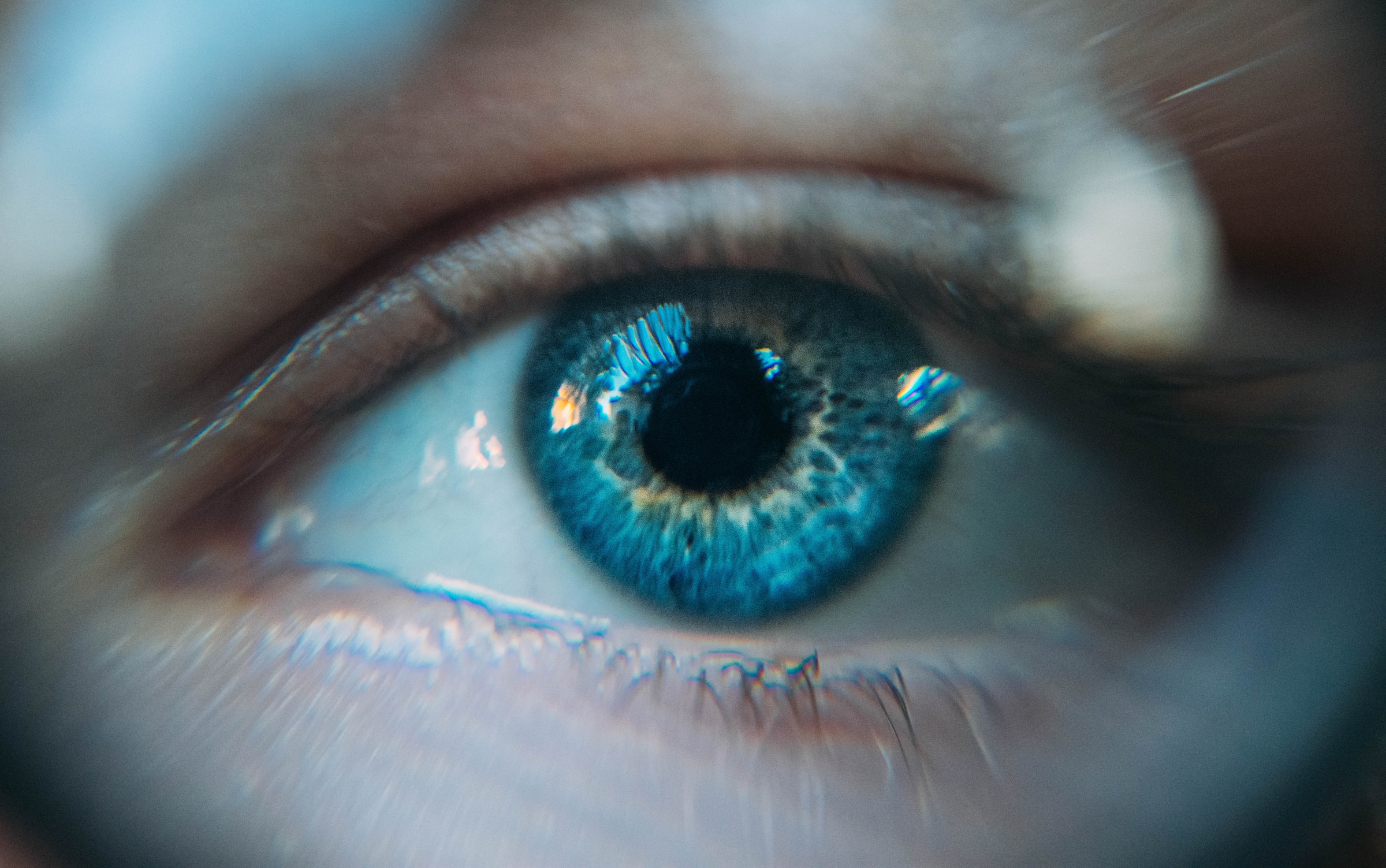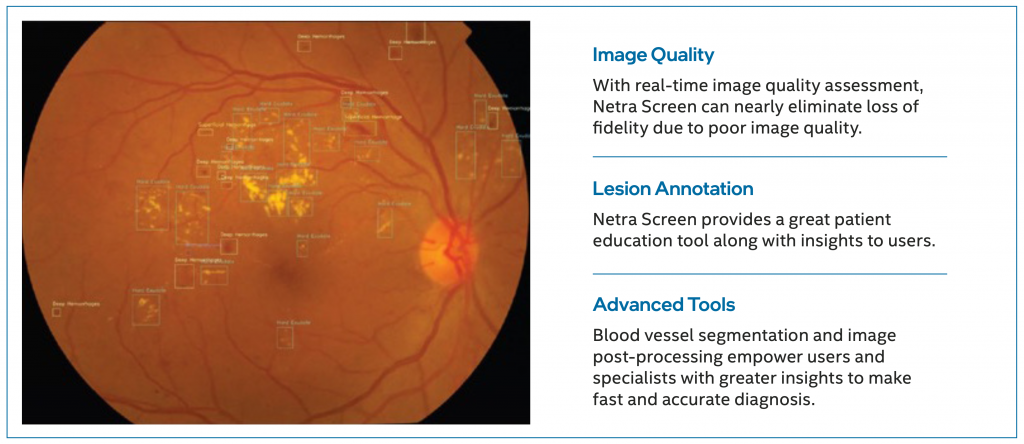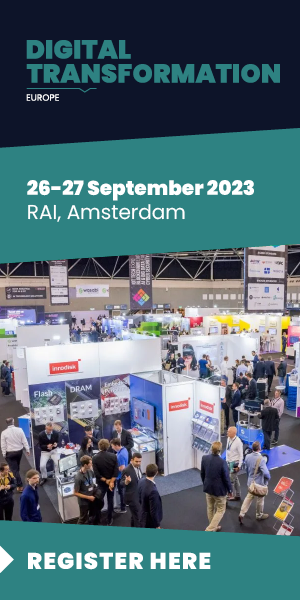
Netra.ai, a solution developed by Leben Care and the Sankara Eye Foundation, is using Intel technologies to identify diabetic retinopathy in minutes.
India has one of the largest diabetic populations in the world with around 65 million people suffering from the disease. Eye damage caused by diabetes, known as diabetic retinopathy (DR), is estimated will affect around one-third of sufferers.
Dr. Kaushik Murali, President Medical Administration, Quality & Education at Sankara Eye Foundation India, said:
“Technology and AI are democratising healthcare access, especially in screening for ailments. Our team at Sankara Eye Foundation has focused on our vision to eliminate needless blindness from India.
The current solution Netra.ai – where we had a key role in the design and development with Leben Care – uses robust platforms from Intel. It is an example of how likeminded collaborators can create meaningful and impactful solutions for various challenges that face humanity.”
DR is a leading cause of vision loss and blindness in adults but early detection can limit its life-changing impact. In many low- and medium-income countries, there is a lack of trained retinal specialists – especially in rural areas – which leads to late diagnosis after diabetic eye disease has already reached advanced stages.
Netra.ai’s cloud-based solution analyses eye images and provides almost immediate results with a 98.5 percent accuracy. The usability of the system means it can be used by just a single technician in a rural area.

Even in more established areas or richer countries, the speed of the AI solution helps to reduce the burden on healthcare systems, increase how many patients can be seen, provide a faster diagnosis, and improve their outcomes.
The solution is powered by Intel’s Deep Learning Boost and uses the Xeon Scalable processor platform via Amazon’s EC2 C5 cloud instances.
A four-step deep convolutional neural network (DCNN) detects DR stage and annotates lesions:

In a Q&A with AI News, Hema Chamraj, Director of Technology Advocacy, Ai4Good at Intel, provided further context on the possibilities for AI in healthcare.
AI News: How long do you think it will be before AI is the primary method of diagnosing diabetic retinopathy?
Hema Chamraj: AI has shown enormous promise on the sensitivity, specificity and the ability to be autonomous as seen in this FDA-approved solution for Diabetic Retinopathy.
However, the primary usage of AI for diabetic retinopathy will be as a screening tool for early detection, reducing the sickness burden, addressing the clinician shortage and overburdened healthcare system.
AN: Are regulatory barriers proving to be much of a hindrance to widespread adoption?
HC: It is still early days for AI. Each country has different regulatory frameworks and many are progressing toward providing guidance for AI.
In the US, the FDA has provided clearance for more than a dozen AI solutions and also just released its first AI action plan.
AN: Despite being trained to be device-agnostic, Netra.ai still requires specialist hardware. However, could people one day routinely check for early signs of DR using self-serve facilities which could be particularly helpful in rural areas?
HC: Yes, AI inferencing can happen at the edge with portable devices with smaller footprint and even on smartphones in the future.
In rural areas, a technician should be able to do the initial screening and counsel the patients requiring urgent referral to the closest hospital.
The AI solution at the edge helps to correctly identify, with very high accuracy, normal versus abnormal images and classify the need of referral. This can help patients avoid unnecessary travel and work disruptions.
AN: Are you confident AI diagnosis tools can significantly reduce pressures on hospitals and help to clear some of the care backlog resulting from the COVID-19 pandemic?
HC: During the pandemic, we’ve seen AI help doctors with COVID testing and drug discovery. We’ve also seen a rise in telehealth options to reduce pressures on hospitals and medical staff.
AN: What other areas of clinical care are you particularly excited about AI’s impact on?
HC: AI in medical imaging has proven its value to uncover hidden insights from large datasets with accuracy exceeding humans in certain cases. All the data in the clinical care system including the EHR, genomic and pathology data could benefit from AI.
The potential of all this data and insights coming together to provide a holistic understanding of the patient is very exciting, as is the prospect to finally move towards prevention and precision medicine.
As of writing, Netra.ai has screened almost 3,093 patients in India and identified 742 who are at-risk. The solution can be expanded to detect other retinal conditions such as Glaucoma.
(Image Credit: Daniil Kuželev on Unsplash)
Interested in hearing industry leaders discuss subjects like this? Attend the co-located 5G Expo, IoT Tech Expo, Blockchain Expo, AI & Big Data Expo, and Cyber Security & Cloud Expo World Series with upcoming events in Silicon Valley, London, and Amsterdam.









